 W
WAn astronomical survey is a general map or image of a region of the sky that lacks a specific observational target. Alternatively, an astronomical survey may comprise a set of many images or spectra of objects that share a common type or feature. Surveys are often restricted to one band of the electromagnetic spectrum due to instrumental limitations, although multiwavelength surveys can be made by using multiple detectors, each sensitive to a different bandwidth.
 W
WIn astronomy, the 2dF Galaxy Redshift Survey, 2dF or 2dFGRS is a redshift survey conducted by the Australian Astronomical Observatory (AAO) with the 3.9m Anglo-Australian Telescope between 1997 and 11 April 2002. The data from this survey were made public on 30 June 2003. The survey determined the large-scale structure in two large slices of the Universe to a depth of around 2.5 billion light years. It was the world's largest redshift survey between 1998 and 2003. Matthew Colless, Richard Ellis, Steve Maddox and John Peacock were in charge of the project. Team members Shaun Cole and John Peacock were awarded a share of the 2014 Shaw Prize in astronomy for results from the 2dFGRS.
 W
WThe Two Micron All-Sky Survey, or 2MASS, was an astronomical survey of the whole sky in the infrared and one of the most ambitious such projects.
 W
WAEGIS, or the All-Wavelength Extended Groth Strip International Survey, is a multi-wavelength astronomical survey of a patch of the sky with low extinction and zodiacal scattering. The purpose of the survey is to study the physical processes and evolution of galaxies at redshift z ~ 1. As of February 2011 more than 80 research papers have been published based on data from the survey.
 W
WThe All Sky Automated Survey (ASAS) is a Polish project implemented on 7 April 1997 to do photometric monitoring of approximately 20 million stars brighter than 14 magnitude all over the sky. The automatic telescopes discovered two new comets in 2004 and 2006. The ASAS-South, located in Chile and ASAS-North, located in Hawai'i, are managed by Grzegorz Pojmański of the Warsaw University Observatory via the internet.
 W
WThe B612 Foundation is a private nonprofit foundation headquartered in Mill Valley, California, United States, dedicated to planetary science and planetary defense against asteroids and other near-Earth object (NEO) impacts. It is led mainly by scientists, former astronauts and engineers from the Institute for Advanced Study, Southwest Research Institute, Stanford University, NASA and the space industry.
 W
WThe Bisei Spaceguard Center (BSGC) is an astronomical observatory located at Bisei-chō, Okayama, Japan. The facility was constructed during 1999–2000, where it since conducts the Bisei Asteroid Tracking Telescope for Rapid Survey or BATTeRS (バッターズ), an astronomical survey that solely tracks asteroids and space debris. BATTeRS has discovered numerous minor planets and the periodic, Halley-type comet and near-Earth object C/2001 W2 (BATTERS).
 W
WObservations for the Bolocam Galactic Plane Survey (BGPS) took place from June 2005 until September 2007 and covers 170 square degrees of the galactic plane visible from the northern hemisphere. The survey detected 8400 sources to a limiting non-uniform 1-sigma noise level in the range 30 to 60 mJy/beam. This survey is the first large-area, systematic and uniform survey of the galactic plane in the millimeter continuum. Additional data was acquired in 2009 and released in 2013. All data are currently available from IPAC.
 W
WThe C-Band All Sky Survey (C-BASS) is a radio astronomy project that aims to map the entire sky in the C Band (5 GHz). It has been conducted on two radio telescopes, one operating in the Karoo in South Africa, the other at Owens Valley Radio Observatory in California.
 W
WThe CALIFA Survey is an astronomical project to map 600 galaxies with integral field spectroscopy (IFS), to allow detailed studies of these objects. The data are taken at the Calar Alto Observatory in Spain.
 W
WThe CINEOS program, started in 2001, is dedicated to the discovery and follow-up of near-Earth objects (NEOs), namely asteroids and comets which periodically approach or intersect the Earth's orbit. In particular CINEOS is addressed to the discovery of Atens and Interior-Earth Objects (IEOs) by extending survey coverage at small solar elongations, and to the discovery of the other kind of NEOs by observing with longer exposures in the opposition region.
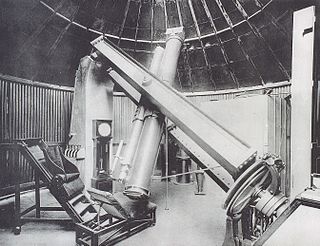 W
WThe Carte du Ciel and the Astrographic Catalogue were two distinct but connected components of a massive international astronomical project, initiated in the late 19th century, to catalogue and map the positions of millions of stars as faint as 11th or 12th magnitude. Twenty observatories from around the world participated in exposing and measuring more than 22,000 (glass) photographic plates in an enormous observing programme extending over several decades. Despite, or because of, its vast scale, the project was only ever partially successful – the Carte du Ciel component was never completed, and for almost half a century the Astrographic Catalogue part was largely ignored. However, the appearance of the Hipparcos Catalogue in 1997 has led to an important development in the use of this historical plate material.
 W
WThe Center for Astrophysics (CfA) Redshift Survey was the first attempt to map the large-scale structure of the universe.
 W
WThe Cluster Lensing And Supernova survey with Hubble (CLASH) was a program on the Hubble Space Telescope to observe 25 massive galaxy clusters. CLASH was one of three programs selected in the first class of Hubble multi-cycle treasury programs, which were designed to tackle large questions unanswerable through normal observations. Observations for CLASH were conducted between November 2010 and July 2013. CLASH was led by principal investigator Marc Postman, and had a science team of over 40 researchers.
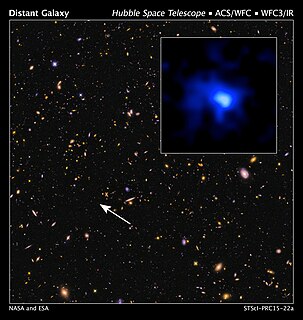 W
WThe Cosmic Assembly Near-infrared Deep Extragalactic Legacy Survey (CANDELS) is the largest project in the history of the Hubble Space Telescope, with 902 assigned orbits of observing time. It was carried out between 2010 and 2013 with two cameras on board Hubble – WFC3 and ACS – and aims to explore galactic evolution in the early Universe, and the very first seeds of cosmic structure at less than one billion years after the Big Bang.
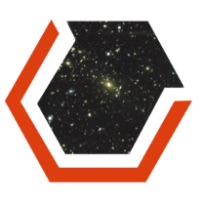 W
WThe Dark Energy Survey (DES) is a visible and near-infrared survey that aims to probe the dynamics of the expansion of the Universe and the growth of large-scale structure. The collaboration is composed of research institutions and universities from the United States, Australia, Brazil, the United Kingdom, Germany, Spain, and Switzerland.
 W
WThe Delaunay tessellation field estimator (DTFE), is a mathematical tool for reconstructing a volume-covering and continuous density or intensity field from a discrete point set. The DTFE has various astrophysical applications, such as the analysis of numerical simulations of cosmic structure formation, the mapping of the large-scale structure of the universe and improving computer simulation programs of cosmic structure formation. It has been developed by Willem Schaap and Rien van de Weijgaert. The main advantage of the DTFE is that it automatically adapts to (strong) variations in density and geometry. It is therefore very well suited for studies of the large scale galaxy distribution.
 W
WDiffuse Infrared Background Experiment (DIRBE) was an experiment on NASA's COBE mission, to survey the diffuse infrared sky. Measurements were made with a reflecting telescope with 19 cm diameter aperture. The goal was to obtain brightness maps of the universe at ten frequency bands ranging from the near to far infrared. Also, linear polarization was measured at 1.25, 2.2, and 3.5 micrometers. During the mission, the instrument could sample half the celestial sphere each day.
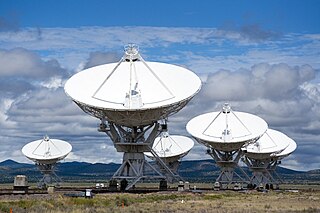 W
WFaint Images of the Radio Sky at Twenty-Centimeters, or FIRST, was an astronomical survey of the Northern Hemisphere carried out by the Very Large Array. It was led by Robert H. Becker, Richard L. White, and David J. Helfand, who came up with the idea for the survey after they had completed the VLA Galactic Plane survey in 1990, as well as Michael D. Gregg and Sally A. Laurent-Muehleisen. The survey was started 50 years after the first systematic survey of the radio sky was completed by Grote Reber in April 1943.
 W
WThe Galactic Emission Mapping survey (GEM) is an international project with the goal of making a precise map of the electromagnetic spectrum of our galaxy at low frequencies.
 W
WThe Galaxy And Mass Assembly (GAMA) survey is a project to exploit the latest generation of ground-based wide-field survey facilities to study cosmology and galaxy formation and evolution. GAMA will bring together data from a number of world class instruments:The Anglo-Australian Telescope (AAT), The VLT Survey Telescope (VST) The Visible and Infrared Survey Telescope for Astronomy (VISTA) The Australian Square Kilometre Array Pathfinder (ASKAP) The Herschel Space Observatory The Galaxy Evolution Explorer (GALEX)
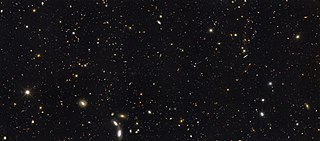 W
WThe Great Observatories Origins Deep Survey, or GOODS, is an astronomical survey combining deep observations from three of NASA's Great Observatories: the Hubble Space Telescope, the Spitzer Space Telescope, and the Chandra X-ray Observatory, along with data from other space-based telescopes, such as XMM Newton, and some of the world's most powerful ground-based telescopes.
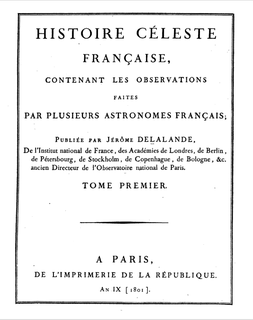 W
WHistoire Céleste Française is an astrometric star catalogue published in 1801 by the French astronomer Jérôme Lalande and his staff at the Paris Observatory. This star catalog consists of the locations and apparent magnitudes of 47,390 stars, up to magnitude 9. Stars are identified by common name, Bayer designation or Flamsteed designation, when available. It also contains observations of other astronomical phenomena. It was the largest and most complete star catalog of its day. This publication is a collection of several books of astronomical recordings taken over the previous decade at the observatory.
 W
WInterstellar Boundary Explorer (IBEX) is a NASA satellite in Earth orbit that uses energetic neutral atoms (ENAs) to image the interaction region between the Solar System and interstellar space. The mission is part of NASA's Small Explorer program and was launched with a Pegasus-XL rocket on October 19, 2008.
 W
WThe Infrared Astronomical Satellite (IRAS) was the first-ever space telescope to perform a survey of the entire night sky at infrared wavelengths. Following the end of its mission, the 1.1 metric-ton satellite was not deorbited and constitutes a space hazard.
 W
WThe Japan Spaceguard Association is a not-for-profit organization based in Tokyo, Japan. Its formal status under the Japanese law is Specified Nonprofit Corporation (特定非営利活動法人).
 W
WLa Sagra Observatory is an astronomical observatory located in the province of Granada, Spain. It uses four robotic telescopes both designed and built by the scientists of the Observatorio Astronómico de Mallorca (OAM) who operate them remotely by telecontrol daily, discharging data from Mallorca using the Internet, to process them by means of algorithms designed "in house" which helped to detect asteroid 367943 Duende. among the other 1706 asteroids, with a 12th place in the ranking of asteroid discoveries. Its activities include, as part of its La Sagra Sky Survey, tracking small Solar System bodies, particularly near-Earth objects, and space debris.
 W
WIn astronomy, a deep field is an image of a portion of the sky taken with a very long exposure time, in order to detect and study faint objects. The depth of the field refers to the apparent magnitude or the flux of the faintest objects that can be detected in the image. Deep field observations usually cover a small angular area on the sky, because of the large amounts of telescope time required to reach faint flux limits. Deep fields are used primarily to study galaxy evolution and the cosmic evolution of active galactic nuclei, and to detect faint objects at high redshift. Numerous ground-based and space-based observatories have taken deep-field observations at wavelengths spanning radio to X-rays, and the first deep-field image to receive a great deal of public attention was the Hubble Deep Field, observed in 1995 with the WFPC2 camera on the Hubble Space Telescope. Other space telescopes that have obtained deep-field observations include the Chandra X-ray Observatory, the XMM-Newton Observatory, and the Spitzer Space Telescope.
 W
WThe Magellan Planet Search Program is a ground-based search for extrasolar planets that makes use of the radial velocity method. It began gathering data in December 2002 using the MIKE echelle spectrograph mounted on the 6.5m Magellan II "Clay" telescope located within the Las Campanas Observatory in Chile. In 2010, the program began using the newly commissioned Planet Finder Spectrograph (PFS), an instrument purpose-built for precise radial velocity measurement.
 W
WMicrolensing Observations in Astrophysics (MOA) is a collaborative project between researchers in New Zealand and Japan, led by Professor Yasushi Muraki of Nagoya University. They use microlensing to observe dark matter, extra-solar planets, and stellar atmospheres from the Southern Hemisphere. The group concentrates especially on the detection and observation of gravitational microlensing events of high magnification, of order 100 or more, as these provide the greatest sensitivity to extrasolar planets. They work with other groups in Australia, the United States and elsewhere. Observations are conducted at New Zealand's Mt. John University Observatory using a 1.8 m (70.9 in) reflector telescope built for the project.
 W
WThe MINiature Exoplanet Radial Velocity Array (MINERVA) is a ground-based robotic dedicated exoplanet observatory. The facility is an array of small-aperture robotic telescopes outfitted for both photometry and high-resolution Doppler spectroscopy located at the U.S. Fred Lawrence Whipple Observatory at Mt. Hopkins, Arizona. The project's principal investigator is the American astronomer Jason Eastman. The telescopes were manufactured by PlaneWave Instruments.
 W
WThe Near-Earth Object Surveillance Mission (NEOSM), formerly called Near-Earth Object Camera (NEOCam) is a planned space-based infrared telescope designed to survey the Solar System for potentially hazardous asteroids.
 W
WThe Near Earth Object Survey TELescope is an astronomical survey and early-warning system for detecting near-Earth objects sized 40 metres and above a few weeks before they impact Earth.
 W
WThe New Mexico Exoplanet Spectroscopic Survey Instrument (NESSI) is a ground-based near-infrared spectrographic system specifically designed to study the atmospheres of exoplanets. The NESSI instrument was mounted in 2014 on a 2.4 meter telescope at the Magdalena Ridge Observatory in Socorro County, New Mexico, USA, achieving first light on 7 April 2014.
 W
WThe Next-Generation Transit Survey (NGTS) is a ground-based robotic search for exoplanets. The facility is located at Paranal Observatory in the Atacama desert in northern Chile, about 2 km from ESO's Very Large Telescope and 0.5 km from the VISTA Survey Telescope. Science operations began in early 2015. The astronomical survey is managed by a consortium of seven European universities and other academic institutions from Chile, Germany, Switzerland, and the United Kingdom. Prototypes of the array were tested in 2009 and 2010 on La Palma, and from 2012 to 2014 at Geneva Observatory.
 W
WThe Optical Gravitational Lensing Experiment (OGLE) is a Polish astronomical project based at the University of Warsaw that runs a long-term variability sky survey (1992-present). The main goals are the detection and classification of variable stars, discovery of microlensing events, dwarf novae, and studies of the structure of the galaxy and the Magellanic Clouds. Since the project began in 1992, it has discovered a multitude of extrasolar planets, together with the first planet discovered using the transit method (OGLE-TR-56b) and gravitational microlensing. The project has been led by professor Andrzej Udalski since its inception.
 W
WPALFA is a large-scale survey for radio pulsars at 1.4 GHz using the Arecibo 305-meter telescope and the ALFA multibeam receivers. It is the largest and most sensitive survey of the Galactic plane to date.
 W
WThe Panoramic Survey Telescope and Rapid Response System located at Haleakala Observatory, Hawaii, US, consists of astronomical cameras, telescopes and a computing facility that is surveying the sky for moving or variable objects on a continual basis, and also producing accurate astrometry and photometry of already-detected objects. In January 2019 the second Pan-STARRS data release was announced. At 1.6 petabytes, it is the largest volume of astronomical data ever released.
 W
WThe SLUGGS survey is an astronomical survey of 25 nearby early-type galaxies. This survey uses a combination of imaging from Subaru/Suprime-Cam and spectroscopy from Keck/DEIMOS to investigate the chemo-dynamical properties of both the diffuse starlight and the globular cluster systems of the target galaxies. Pilot data for the survey was obtained in 2006 and data acquisition was completed in 2017.
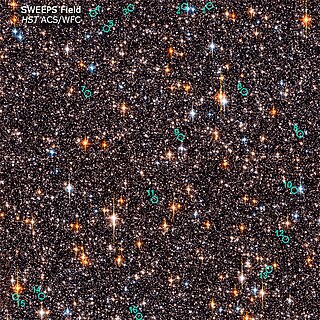 W
WThe Sagittarius Window Eclipsing Extrasolar Planet Search, or SWEEPS, was a 2006 astronomical survey project using the Hubble Space Telescope's Advanced Camera for Surveys - Wide Field Channel to monitor 180,000 stars for seven days to detect extrasolar planets via the transit method.
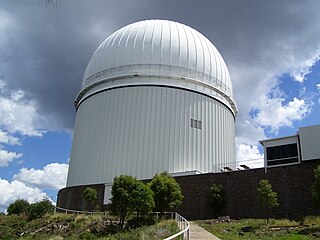 W
WThe Siding Spring Survey (SSS) was a near-Earth object search program that used the 0.5-metre Uppsala Southern Schmidt Telescope at Siding Spring Observatory, New South Wales, Australia. It was the southern hemisphere counterpart of the Catalina Sky Survey (CSS) located in the Santa Catalina Mountains on Mount Bigelow, near Tucson, Arizona, USA. The survey was the only professional search for dangerous asteroids being made in the Southern Hemisphere.
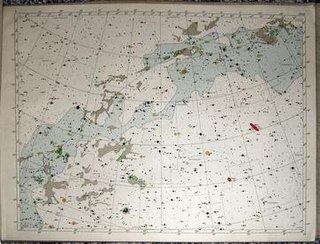 W
WThe Skalnaté Pleso Atlas of the Heavens is a set of 16 celestial charts covering the entire sky. It is named after the Skalnaté Pleso Observatory in Slovakia where it was produced. The first versions were published by the Czechoslovak Astronomical Society in 1948; later that year, Sky Publishing Corporation acquired the copyright and began publication in the United States. The charts were hand-drawn by Antonín Bečvář.
 W
WSkyMapper is a fully automated 1.35 m (4.4 ft) wide-angle optical telescope at Siding Spring Observatory in northern New South Wales, Australia. It is one of the telescopes of the Research School of Astronomy and Astrophysics of the Australian National University (ANU). The telescope has a compact modified Cassegrain design with a large 0.69 m secondary mirror, which gives it a very wide field of view: its single, dedicated instrument, a 268-million pixel imaging camera, can photograph 5.7 square degrees of sky. The camera has six light filters which span from ultraviolet to near infrared wavelengths.
 W
WThe Sloan Digital Sky Survey or SDSS is a major multi-spectral imaging and spectroscopic redshift survey using a dedicated 2.5-m wide-angle optical telescope at Apache Point Observatory in New Mexico, United States. The project was named after the Alfred P. Sloan Foundation, which contributed significant funding.
 W
WThe term Spaceguard loosely refers to a number of efforts to discover, catalogue, and study near-Earth objects (NEO), especially those that may impact Earth.
 W
WThe Spaceguard Foundation (SGF) is a private organization based in Frascati, Italy, whose purpose is to study, discover and observe near-Earth objects (NEO) and protect the Earth from the possible threat of their collision. The foundation is non-partisan, non-political and non-profit, and acts as the international organization grouping together the spaceguard organizations in various countries, as well as individual astronomers and organizations interested in the foundation's activities.
 W
WSPECULOOS is a project consisting of SPECULOOS Southern Observatory (SSO) at the Paranal Observatory in Chile and SPECULOOS Northern Observatory (SNO) at the Teide Observatory in Tenerife.
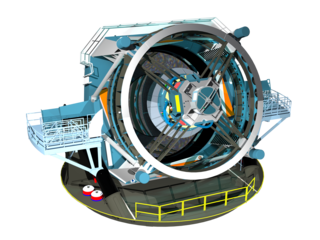 W
WThe Vera C. Rubin Observatory, previously referred to as the Large Synoptic Survey Telescope (LSST), is an astronomical observatory currently under construction in Chile. Its main task will be an astronomical survey, the Legacy Survey of Space and Time (LSST). The Rubin Observatory has a wide-field reflecting telescope with an 8.4-meter primary mirror that will photograph the entire available sky every few nights. The word synoptic is derived from the Greek words σύν and ὄψις, and describes observations that give a broad view of a subject at a particular time. The observatory is named for Vera Rubin, an American astronomer who pioneered discoveries about galaxy rotation rates.
 W
WWASP or Wide Angle Search for Planets is an international consortium of several academic organisations performing an ultra-wide angle search for exoplanets using transit photometry. The array of robotic telescopes aims to survey the entire sky, simultaneously monitoring many thousands of stars at an apparent visual magnitude from about 7 to 13.
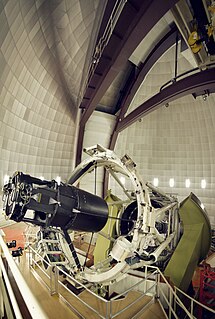 W
WThe WiggleZ Dark Energy Survey was a large-scale astronomical redshift survey carried out on the 3.9 metre Anglo-Australian Telescope (AAT) at the Siding Spring Observatory, New South Wales between August 2006 and January 2011. The name stems from the measurement of baryon acoustic oscillations in the distribution of galaxies.